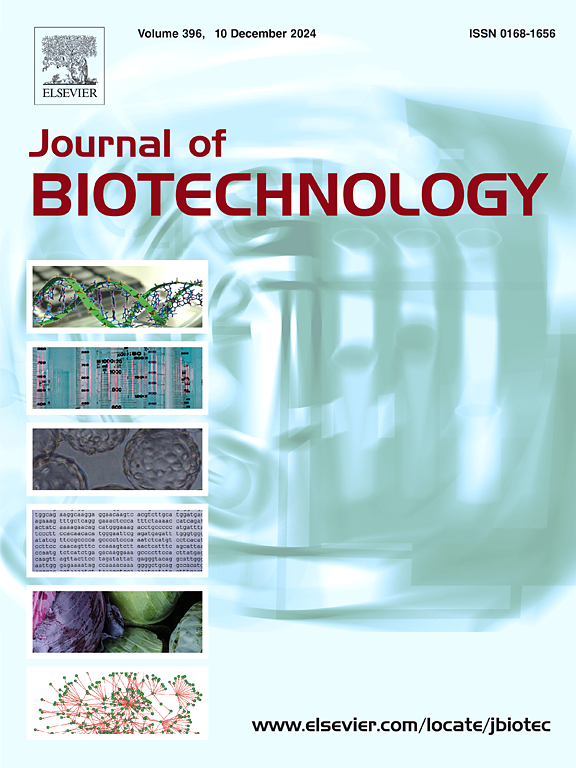The impact of charged particles on beta-glucosidase and its molecular dynamics mechanism: A deep insight into the effects of charged peptides on enzyme activity and conformation
IF 3.9
2区 生物学
Q2 BIOTECHNOLOGY & APPLIED MICROBIOLOGY
引用次数: 0
Abstract
Beta-Glucosidase(BGL) is an enzyme present in all organisms and plays a key role in a variety of biological processes. In this study, three short peptides Z1, O1, and F1 with positive, neutral, and negative charges, respectively, were designed and synthesised, which were added to the BGL system of action, and the changes in BGL activity and conformation induced by the charged short peptides were investigated by measuring changes in enzyme activities and zeta potentials, as well as by applying spectroscopy and computer simulation. The results showed that Z1 increased BGL activity and zeta potential by 54.6 %, on the contrary, the negatively charged short peptide F1 inhibited its enzyme activity and decreased the potential by 38.3 %, and O1 had less effect on BGL. The results of spectroscopy and computer simulation showed that the addition of the charged short peptide led to significant changes in the apparent morphology and structure of BGL, but it did not bind to BGL to form a complex, but rather affected its surface charge distribution and altered the enzymatic activity and structure of BGL.
带电粒子对β -葡萄糖苷酶的影响及其分子动力学机制:深入了解带电肽对酶活性和构象的影响。
β -葡萄糖苷酶(BGL)是一种存在于所有生物体内的酶,在多种生物过程中起着关键作用。本研究设计并合成了3种分别带正电荷、中性电荷和负电荷的短肽Z1、O1和F1,并将其加入到BGL的作用体系中,通过测量酶活性和zeta电位的变化,以及应用光谱学和计算机模拟,研究了带电短肽对BGL活性和构象的影响。结果表明,Z1使BGL活性和zeta电位提高54.6%,而带负电荷的短肽F1抑制其酶活性,使zeta电位降低38.3%,O1对BGL的影响较小。光谱学和计算机模拟结果表明,带电短肽的加入使BGL的表观形态和结构发生了明显的变化,但并没有与BGL结合形成络合物,而是影响了BGL的表面电荷分布,改变了BGL的酶活性和结构。
本文章由计算机程序翻译,如有差异,请以英文原文为准。
求助全文
约1分钟内获得全文
求助全文
来源期刊

Journal of biotechnology
工程技术-生物工程与应用微生物
CiteScore
8.90
自引率
2.40%
发文量
190
审稿时长
45 days
期刊介绍:
The Journal of Biotechnology has an open access mirror journal, the Journal of Biotechnology: X, sharing the same aims and scope, editorial team, submission system and rigorous peer review.
The Journal provides a medium for the rapid publication of both full-length articles and short communications on novel and innovative aspects of biotechnology. The Journal will accept papers ranging from genetic or molecular biological positions to those covering biochemical, chemical or bioprocess engineering aspects as well as computer application of new software concepts, provided that in each case the material is directly relevant to biotechnological systems. Papers presenting information of a multidisciplinary nature that would not be suitable for publication in a journal devoted to a single discipline, are particularly welcome.
 求助内容:
求助内容: 应助结果提醒方式:
应助结果提醒方式:


